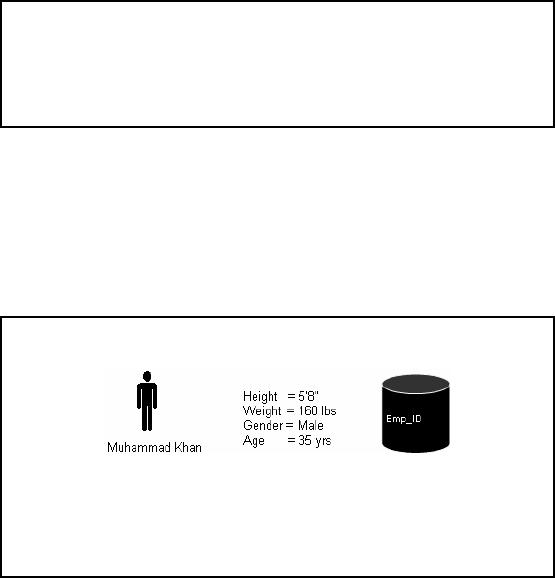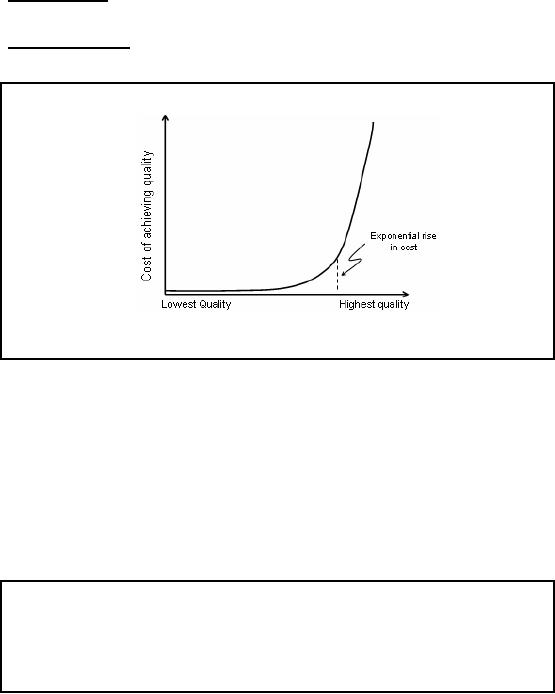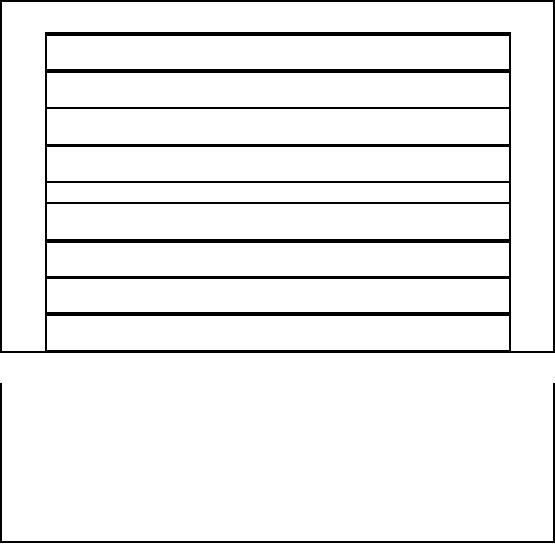 |

Lecture-21
Introduction
to Data Quality Management
(DQM)
Data is
the "fuel" on which a Data
Warehouse (DWH) runs. One of
the main reasons for
the
failure of
DWH deployments is data quality or
lack of it. Unfortunately the
problems of data
quality
are usually underestimated, leading to
bad decisions, traumatic
results and expensive
fixes.
There
can be a whole course on
data quality. The goal of this
lecture is to expose the
reader to the
data
quality issues, and to
motivate them to understand more
about quality management
and
quality control.
This will enable the
reader to relate quality
management to the DWH,
because
usually
quality control relates to manufacturing
than Data
Warehousing.
Consider the
analogy of a car. You may
have the best car,
the bes t road conditions
and the best
driver on
the seat. But if the
fuel is contaminated, or is not of the
right octane, either the car
will
not run, or
will run, but not give
the right
performance.
What is
Quality? Informally
Some
things are better than
others i.e. they are of
higher quality. How much "better" is
better?
Is the
right item the best
item to purchase? How about
after the purchase?
What is quality
of service? The bank
example
The
best way to look at data
quality is to look at what quality
means in the general
marketplace
and
then translate what quality means
for data. As consumers,
human beings consciously
or
subconsciously
judge the "quality" of things
during their life -time. A
conscious application of
quality
measurement is when a person compares
products in a store and
chooses one of them
as
the
"right" product. "Right"
here means selecting the
product that best meets
his/her overall
needs. Note
that the product bought may not
necessarily have the best
features in every
category.
After
pur chase, people establish
quality based on a product-price comparison
i.e. whether that
product
for its price met their
expectations as per its
intended use?
What is
Quality? Formally
Quality is
conformance to requirements"
P. Crosby,
"Quality is Free"
1979
Degree of
excellence"
Webster's
Third New International Dictionary
Conformance to
requirements does not imply simply
conformation to written
specifications.
Customers'
requirements may be formal
and written, or informal mental
expectations of meeting
their purpose or
satisfying their needs.
166

If a product
meets formally defined "requirement
specifications," yet fails to be a
quality product
from
the customers' pe rspective,
this means the requirements
were defective.
If an application is
designed and built to meet
the
functional requirements signed
off by the
business
sponsors, and during formal
testing the business
sponsors reject the application as
not
meeting
their needs, what does that
mean? Either the requirements
specification or the analysis
and
design process is defective.
What is
Quality? Examples from Auto
Industry
Quality
means meeting customer's
needs, not necessarily exceeding
them.
Quality means
improving things customers
care
about, because
that makes their lives
easier and
more
comfortable.
Why example
from auto-industry?
The
luxury automobile producer Rolls Royce
went bankrupt in the early 1980s.
Analysis revealed
that,
among other things , Rolls Royce was
improving components that
the luxury automobile
customers
felt were irrelevant and
polishing parts they did not
care about. This drove
the price
beyond what
the luxury automobile
customer felt was value
for their money.
On the other ha
nd, when Lexus decided to
make its first major
redesign of its highly rated
L8 400
luxury
automobile, company representatives asked
for help from their existing
customers. They
even
visited the homes of a
variety of L8 400 owners to observe home furnishings,
what kind of
leather
they had on their brief
cases, and other minute details to
get an idea of their
customer's
subconscious
expectations.
What is
Data Quality?
What is
Data?
All
data is an abstraction of something
real
Intrinsic
Data Quality
Electronic
reproduction of reality.
Realistic
Data Quality
Degree of
utility or value of data to
business
Figure-21.1:
What is Data Quality?
What is
data?
Understand
that all data is an
abstraction or a representation of
something real. Data is
an
equivalent
reproduction of something real. Figure
21.1 shows an employee data.
Data in a
167

database or
data warehouse has no actual
value; it only has potential
value. Data has a real
value
only
when someone uses it to do
something useful; for example, to
send the utility bill
to
customer at
the correct address for
timely payment, or to successfully go
with the change in a
product
based on the knowledge of customer
likes/dislikes.
What Is
Data Quality?
There are
two significant definitions of dat a quality.
One is its intrinsic quality, and
the other is its
realistic
quality. Intrinsic data quality is
the correctness or accuracy of
data. Realistic data
quality
is the
value that correct data
has in supporting the work of
the business or enterprise.
Data that
does not help or
enable the enterprise to
accomplish its mission has
no quality, no matter how
accurate it
is.
Intrinsic
Data Quality
Intrinsic
data quality, simply stated, is data
accuracy. Intrinsic data
quality is the degree to
which
data
accurately reflects the
real-world object that the
data represents. If all
facts that an
organization
needs to know about an
entity are accurate, that
data has intrinsic quality -it is
an
electronic
reproduction of reality. Intrinsic data quality
means that data is
correct.
Realistic
Data Quality
Realistic data
quality is the degree of
utility and value the
data has to support the
enterprise
processes
that enable accomplishing
enterprise objectives. Fundamentally,
realistic data quality is
the
degree of customer satisfaction
generated by the knowledge workers who
use it to do their
jobs.
Realistic data quality is
the degree to which data
enables knowledge workers to meet
enterprise
objectives efficiently and
effectively.
Data
Quality & Organizations
Intelligent
Learning Organization:
High -quality
information is an open,
shared resource
with value-adding
processes.
The
dysfunctional learning organization: Low -quality
data is a proprietary
resource
with cost-
adding
processes.
The
intelligent learning organ ization is one
that maximizes both its
experience and its
information
resources in
the learning process. The intelligent
learning organization shares information
openly
across
the enterprise in a way that
maximizes the throughput of the entire
organization . There are
no procedural
walls, and the data users
capture data and retrieve
makes the business to
grow.
In the
Information Age, the dysfunctional
learning organization is at a distinct
disadvantage. The
term
dysfunctional means "impaired or abnormal
functioning."
168

Orr's
Laws of Data Quality
Law #1 - "Data
that is not used cannot be
correct!"
Law #2 - "Data
quality is a function of its use,
not its collection!"
Law #3 - "Data
will be no better than its
most stringent use!"
Law #4 - "Data
quality problems increase
with the age of the
system!"
Law #5
"The less likely something
is to occur, the more
traumatic it will be when it
happens!"
We will
only know about the
quality of the data (good or
bad) once we start using it. IF
the data
has
never been used, then it
would be na�ve and self
deceiving to assume that it is of
the right
quality. A realistic
approach would be to assume
that it is not of the right quality, IF
it ha snot
been
used.
As the
data is continued to be used, its
quality issues come up and
as a consequence its quality
gets
improved. A good analogy could be
that of a machine, a well
oiled machine which is
being
used is
likely to continue to work as
compared to a large machine that
has not been used for
a
long
time.
The
third law kind of supports
or goes with the second
law i.e. the more stringent
use of the data
is,
the more likely that the
quality issues that crop up
will be identified and
fixed. Consider the
analogy of a
map. A street map given in
an atlas is fine as long as using it you
can find the
major
shopping
areas, however, you may be
surprised that you may not be
able to find your house
using
that
map, because the map
was not meant to handle the
stringent use of locating your
house.
Law-4
can have two possible exp
lanations. One is rather obvious
i.e. the shelf life of
storage
medium which is
very low for diskettes,
comparatively better for magnetic
tapes and very
high
for
CDs. Depending on which medium was
used to store the data
will dictate the data
quality. The
other possibility is
the meta data or people who
are aware of the data
anomalies but leave
the
organization
over a period of time by retiring or
changing jobs or die.
Total
Quality Management (TQM)
Philosophy of
involving all for systematic
and continuous improvement.
It is customer
oriented. Why?
TQM
incorporates the concept of product
quality, process control, quality
assurance, and
quality
improvement.
Quality
assurance is NOT Quality
improvement
TQM approach is
advocating the involvement of all
employees in the continuous
improvement
process,
the ultimate goal being the customer
satisfaction.
The
TQM philosophy of management is
customer-oriented. All members of a
total quality
management
(control) organization strive to
systematically manage the improvement of
the
169

organization through
the ongoing participation of all
employees in problem solving
efforts across
functional
and hierarchical boundaries.
Quality
assurance is a system of activities that
assures conformance of product to pre
-established
requirements.
Quality improvement is making
all efforts to increase
effectiveness and efficiency in
meeting
accepted
customer expectations.
Co$t of
fixing data
quality
n Defect minimization is
economical.
n
Defect elimination is
very very expensive
Figure-21.2:
Co$t of fixing data
quality
One
can ask for the
stars i.e. perfect data quality,
only if there is no associated
cost, in such a case
this
may be a perfectly legitimate requirement.
However, in real world, such a
requirement is
NOT
realistic. Why? If you give me an
infinite amount of money, I
will personally look at
each
and
every record and data
element. But this is not
realistic; you don't have
enough money to pay
for
that. Even if you had
the money, it will take an
inordinate amount of time to check each
and
every
record. By the time I am finished
checking/fixing data, trends may have
changed, and the
question
that needed the data
may no longer be interesting
any more.
Note
that as the data quality is
pushed beyond a certain
limit, law of diminishing
returns sets in
i.e.
increasing the input does
not results in corresponding increase in
output, actually the
output
starts to go
down in this the
cost-quality ratio, as shown in Figure
21.2.
Co$t of
Data Quality
Defects
�
Controllable
Costs
o Recurring costs
for analyzing, correcting,
and preventing data
errors
�
Resultant
Costs
o Internal
and external failure costs
of business opportunities
missed.
�
Equipment &
Training Costs
The
costs are immense.
Inaccurate data will lead to
bad decisions, and bad
decisions can never
be
profitable.
Unless the fingers of the
CEO are on the pulse of the
business, that business can
not
170

prosper.
The pulse of the business is
access to reliable data,
without which a business can
not be
managed.
Direct
costs of data quality to a data intensive
organization include the
following:
1.
Controllable costs: If possible,
compare two or more
alternatives for improving
data quality.
Estimate
the controllable, equipment, and
training costs for each
alternative. Include an estimate
of labor
hours devoted to prevent, appraise, and
correct problems.
2.
Resultant costs: Missing
business opportunities. Mis
-communicating within the business
or
with
end customers and other
information stakeholders. Sometimes
resultant costs and
indirect
costs
are more difficult to quantify.
Assess these costs wherever
possible to adequately
measure
the
impacts of poor data quality.
For example, the inability
to match payroll records to
the official
employment
records can cost millions in
payroll overpayments to retirees,
personnel on leave
without
pay status, and "ghost"
employees. Inability to correlate
purchase orders to invoices
may
be a major
problem in unmatched disbursements.
Resultant costs, such as
payroll overpayments
and
unmatched disbursements, may be
significant enough to warrant extensive
changes in
processes,
systems, policy and
procedure, and information
system data designs.
3.
Equipment and training costs:
Costs
for data quality tools,
ancillary hardware and software,
and
training required to prevent, appraise,
and correct data quality
problems.
Where
data quality is
critical?
�
Almost
everywhere, some
examples:
�
Marketing
communications.
�
Customer
matching.
�
Retail
house-holding.
�
Combining
MIS systems after
acquisition.
One of
the reasons for the
lack of planning to address
data quality issues is that
operational
system
people don't sufficiently consider
the business impact of bad
data. Basically their goal is
to increase
the number of (say) claims
processed per hour. T o put it more
positively, they must
better
appreciate the opportunities of DWH
applications that are
critically dependent on
data
quality.
Following is a sampler of some
CRM -based
applications.
Marketing
Communications : If you want to
understand who your
customers are, and if
you
want to
communicate effectively with
them on the phone, mail
and via email, you
must have an
extraordinarily
clean customer list. You
destroy your credibility by
using absurd or
misspelled
addresses or
names or by sending multipl e
letters to the same person.
Even worse, if the
address
is invalid in
some way, the letter
never reaches the intending
recipient.
Customer
Matching : You want to
find the same customer when
the customer buys a second
or a
third
product from you. Customer
matching is a major issue in banking
and healthcare, where
separate
customer (or patient)
encounters are often listed
separately. The average bank
has great
difficulty
listing all of the separate
accounts of a given individual, although
the reverse proces s
of
listing
all the individuals in a
specific account is pretty
straightforward.
171

Retail
House-holding: You want to
find a group of people who
comprise a family, each
of
whom is
your customer. When you correctly
identify the household, you
can communicate
coherently
with its members. At that
time you can identify the
overall needs of the
household and
suggest an
effective consolidation or expansion of
products. This process is
called "cross-selling."
Cross-selling
your own customer base is
recognized as one of the
most effective ways to
increase
sales.
Combining
Information Systems after an Acquisition:
An
increasingly common MIS
problem
is merging
customer lists and product
lists from incompatible information
systems after an
acquisition.
Organizationally, it may be easy to imagine combining
staffs and moving
everything
to the
corporate system after an acquisition,
but what do you do with the
data itself? Sometimes
the
customer list is the most
valuable asset of the
acquired organization.
Characteristics
or Dimensions of Data
Quality
Data
Quality
Definition
Characteristic
Accuracy
Qualitatively
assessing lack of error,
high accuracy
corresponding to
small error.
Completeness
The
degree to which values are
present in the attributes
that
require
them.
Consistency
A measure of
the degree to which a set of
data satisfies a set
of
constraints.
Timeliness
A measure of
how current or up to date the
data is.
Uniqueness
The
state of being only one of
its kind or being without
an
equal or
parallel.
Interpretability
The
extent to which data is in
appropriate languages,
symbols,
and units, and the
definitions are
clear.
Accessibility
The
extent to which data is
available, or easily and
quickly
retrievable
Objectivity
The
extent to which data is
unbiased, unprejudiced, and
impartial
95%
accurate and 100%
complete
OR
100%
accurate and 95%
complete
Which is
better?
Depends on
data quality (i)
tolerances,
the
(ii) corresponding application and
the (iii) cost of achieving
that data quality vs. the
(iv)
business
value.
172
Table of Contents:
- Need of Data Warehousing
- Why a DWH, Warehousing
- The Basic Concept of Data Warehousing
- Classical SDLC and DWH SDLC, CLDS, Online Transaction Processing
- Types of Data Warehouses: Financial, Telecommunication, Insurance, Human Resource
- Normalization: Anomalies, 1NF, 2NF, INSERT, UPDATE, DELETE
- De-Normalization: Balance between Normalization and De-Normalization
- DeNormalization Techniques: Splitting Tables, Horizontal splitting, Vertical Splitting, Pre-Joining Tables, Adding Redundant Columns, Derived Attributes
- Issues of De-Normalization: Storage, Performance, Maintenance, Ease-of-use
- Online Analytical Processing OLAP: DWH and OLAP, OLTP
- OLAP Implementations: MOLAP, ROLAP, HOLAP, DOLAP
- ROLAP: Relational Database, ROLAP cube, Issues
- Dimensional Modeling DM: ER modeling, The Paradox, ER vs. DM,
- Process of Dimensional Modeling: Four Step: Choose Business Process, Grain, Facts, Dimensions
- Issues of Dimensional Modeling: Additive vs Non-Additive facts, Classification of Aggregation Functions
- Extract Transform Load ETL: ETL Cycle, Processing, Data Extraction, Data Transformation
- Issues of ETL: Diversity in source systems and platforms
- Issues of ETL: legacy data, Web scrapping, data quality, ETL vs ELT
- ETL Detail: Data Cleansing: data scrubbing, Dirty Data, Lexical Errors, Irregularities, Integrity Constraint Violation, Duplication
- Data Duplication Elimination and BSN Method: Record linkage, Merge, purge, Entity reconciliation, List washing and data cleansing
- Introduction to Data Quality Management: Intrinsic, Realistic, Orr’s Laws of Data Quality, TQM
- DQM: Quantifying Data Quality: Free-of-error, Completeness, Consistency, Ratios
- Total DQM: TDQM in a DWH, Data Quality Management Process
- Need for Speed: Parallelism: Scalability, Terminology, Parallelization OLTP Vs DSS
- Need for Speed: Hardware Techniques: Data Parallelism Concept
- Conventional Indexing Techniques: Concept, Goals, Dense Index, Sparse Index
- Special Indexing Techniques: Inverted, Bit map, Cluster, Join indexes
- Join Techniques: Nested loop, Sort Merge, Hash based join
- Data mining (DM): Knowledge Discovery in Databases KDD
- Data Mining: CLASSIFICATION, ESTIMATION, PREDICTION, CLUSTERING,
- Data Structures, types of Data Mining, Min-Max Distance, One-way, K-Means Clustering
- DWH Lifecycle: Data-Driven, Goal-Driven, User-Driven Methodologies
- DWH Implementation: Goal Driven Approach
- DWH Implementation: Goal Driven Approach
- DWH Life Cycle: Pitfalls, Mistakes, Tips
- Course Project
- Contents of Project Reports
- Case Study: Agri-Data Warehouse
- Web Warehousing: Drawbacks of traditional web sear ches, web search, Web traffic record: Log files
- Web Warehousing: Issues, Time-contiguous Log Entries, Transient Cookies, SSL, session ID Ping-pong, Persistent Cookies
- Data Transfer Service (DTS)
- Lab Data Set: Multi -Campus University
- Extracting Data Using Wizard
- Data Profiling